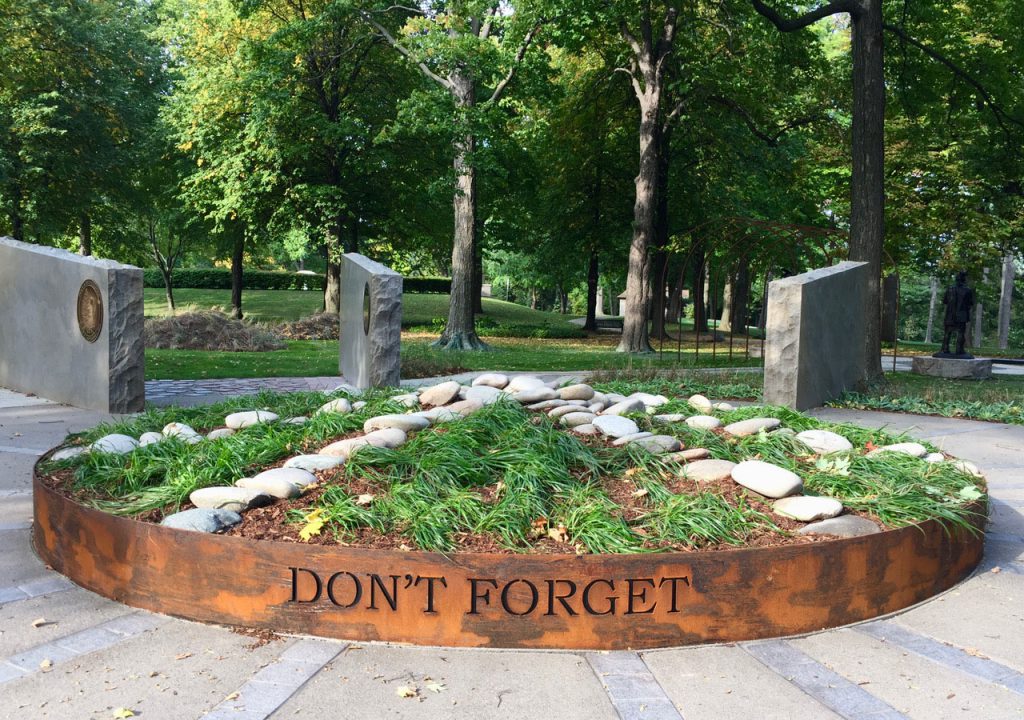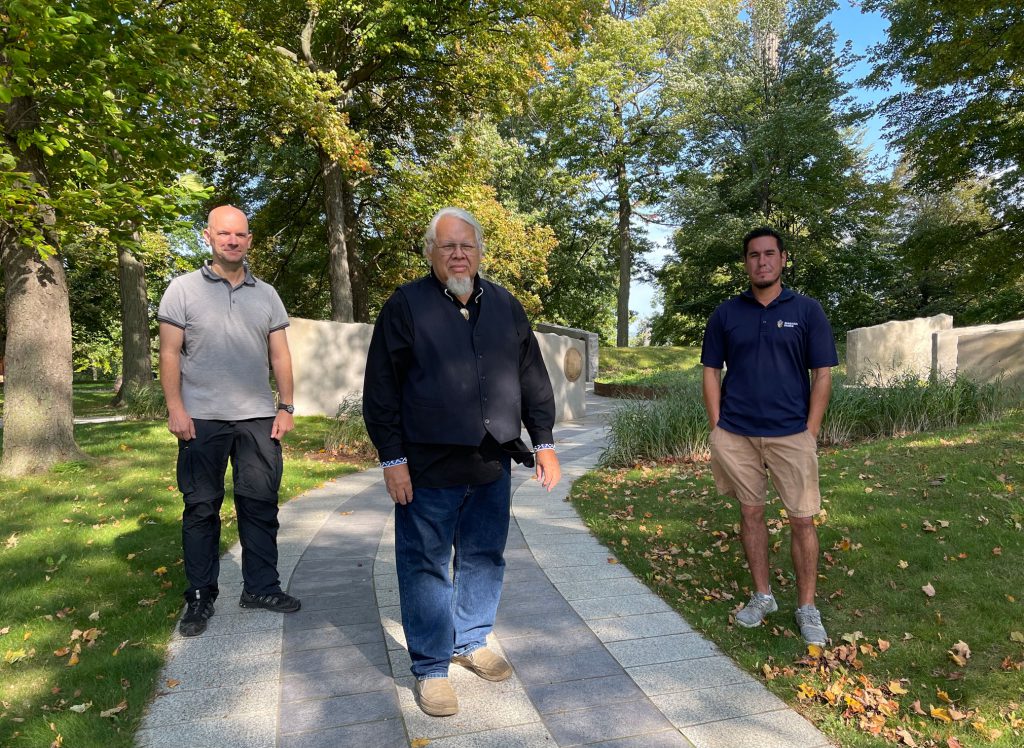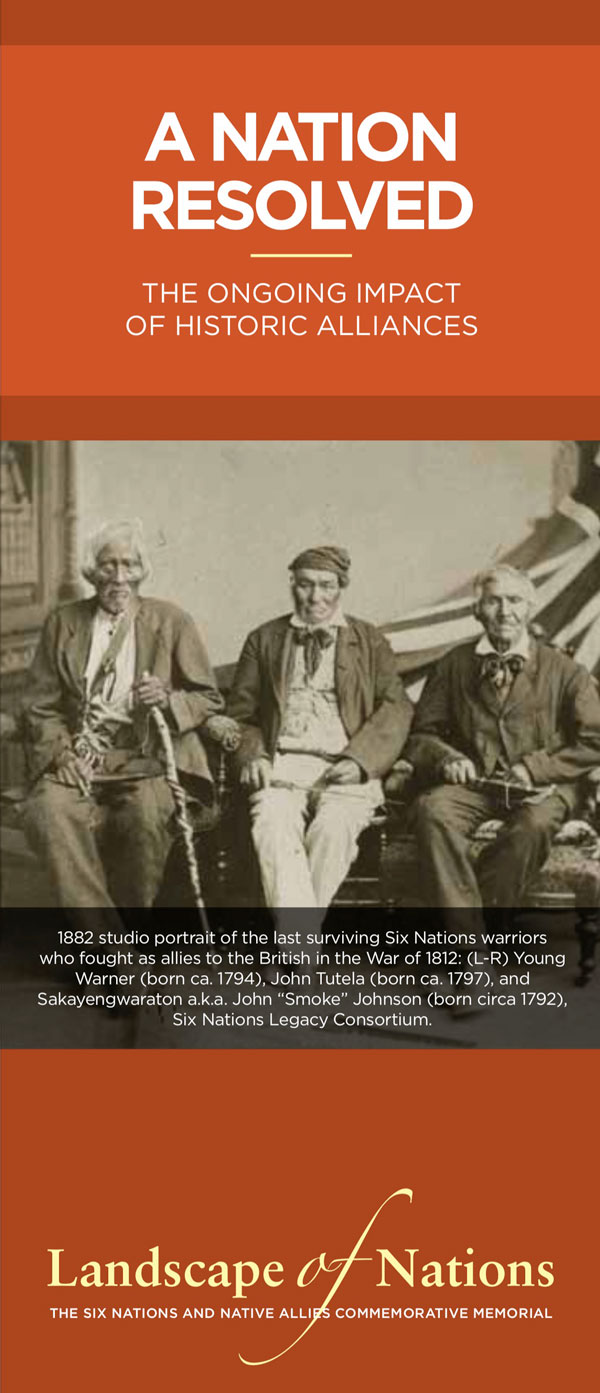SITE CONCEPT: A PLACE OF MEMORY
The concept is one that utilizes the landscape site as a “memorial space and place” as opposed to a singular memorial public artwork. The most powerful experiences are gained from the creation of spaces and forms that foster emotional and intellectual impulses. In this design, the “place” is a creation that not only communicates a singular event in the War of 1812, the Battle of Queenston Heights, but also anchors that event in the context of time and culture of the Six Nations and Native allies. The idea works by linking a variety of exhibit elements and experiences along a central meandering path. The path is a metaphor for the passage of time as well as for the lasting values of peace and mutual respect.
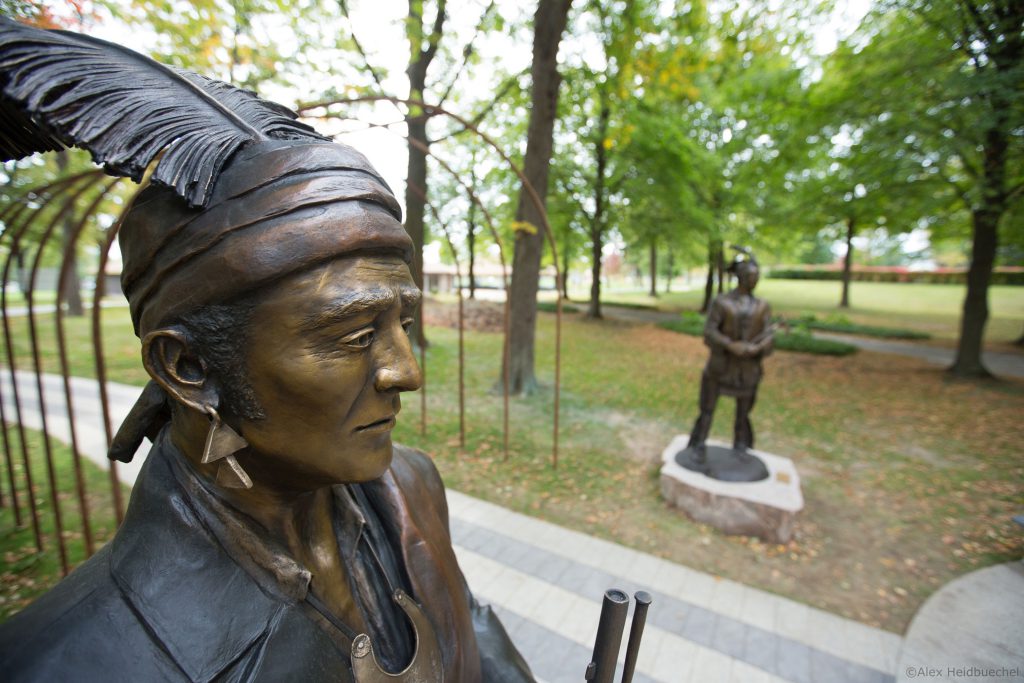
DESIGN CONCEPT: RECONNECTING TO MEMORY
This memorial provides an engaging experience for visitors through layers of meaning. The Six Nations and their Native allies played a pivotal role in the defense of Upper Canada. This memorial tells a story that involves both cultural and historical references. The vision is one that recognizes time, culture, events and environment as expressed through the design of the site and the central circular memorial feature. The design of the memorial is conceived as a balance of humans and nature. This is a place that people can come and experience in their own way. It is a concept that is respectful of the site and memory of those who gave their lives in defense of freedom, life, and land.
CULTURAL CONCEPT: SHARING OUR MEMORIES
The Landscape of Nations Commemorative Memorial offers numerous educational opportunities for the engagement of teachers, students, and all visitors in the understanding of the conflict within the broader sense of cultural history. The memorial has a broad appeal in its ability to create understandings of the enduring aspects of Indigenous peoples as they relate to historical, social, cultural, and environmental issues. This engagement can go further through the involvement of Indigenous organizations, First Nations, schools, and other interest groups in the creation of educational content that supports the restoration of memory about Indigenous contributions to Canada’s early defence and establishment.
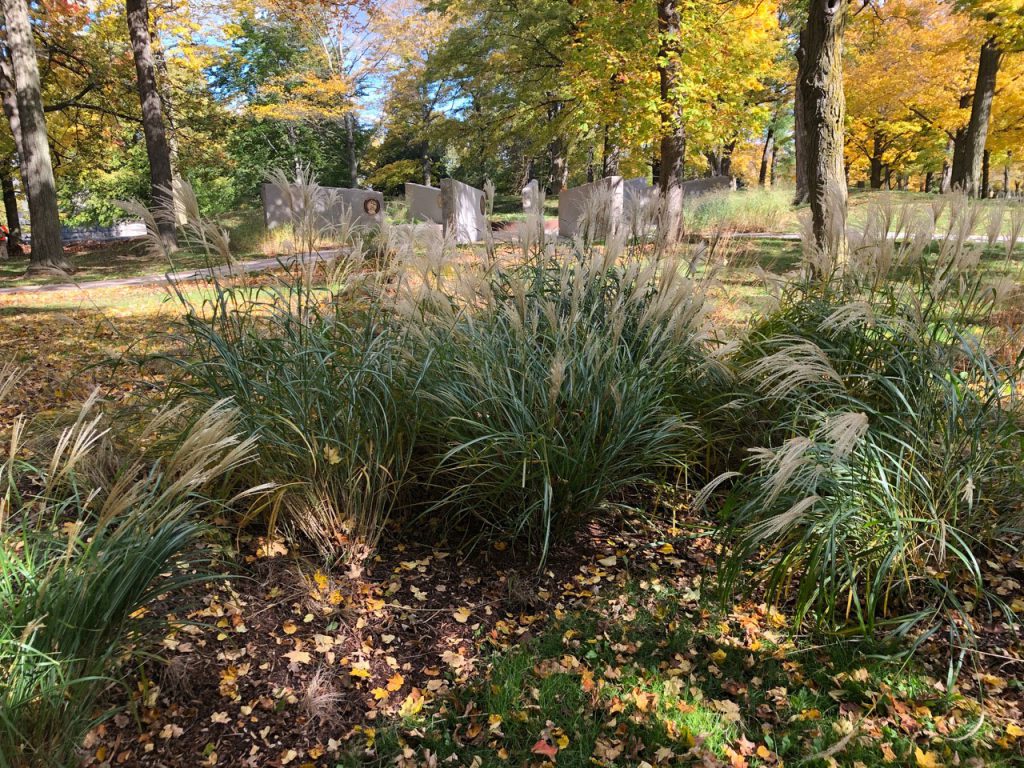
MATERIALS: HONORING MOTHER EARTH
The Memorial utilizes materials and methods that minimize environmental impact. The intended out- come of the design was the creation of a monument that will endure over time. The technical approach to the design and construction of the memorial minimizes maintenance while creating a sustainable place expected to last beyond seven generations.

